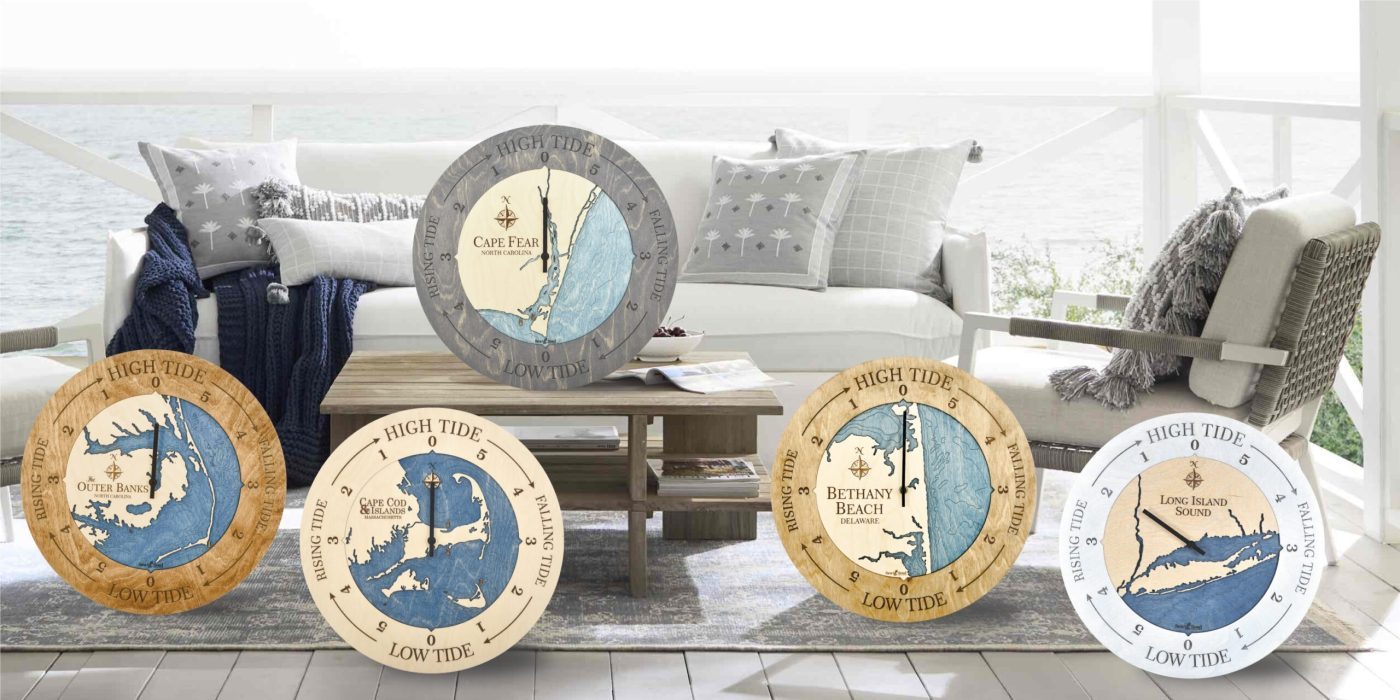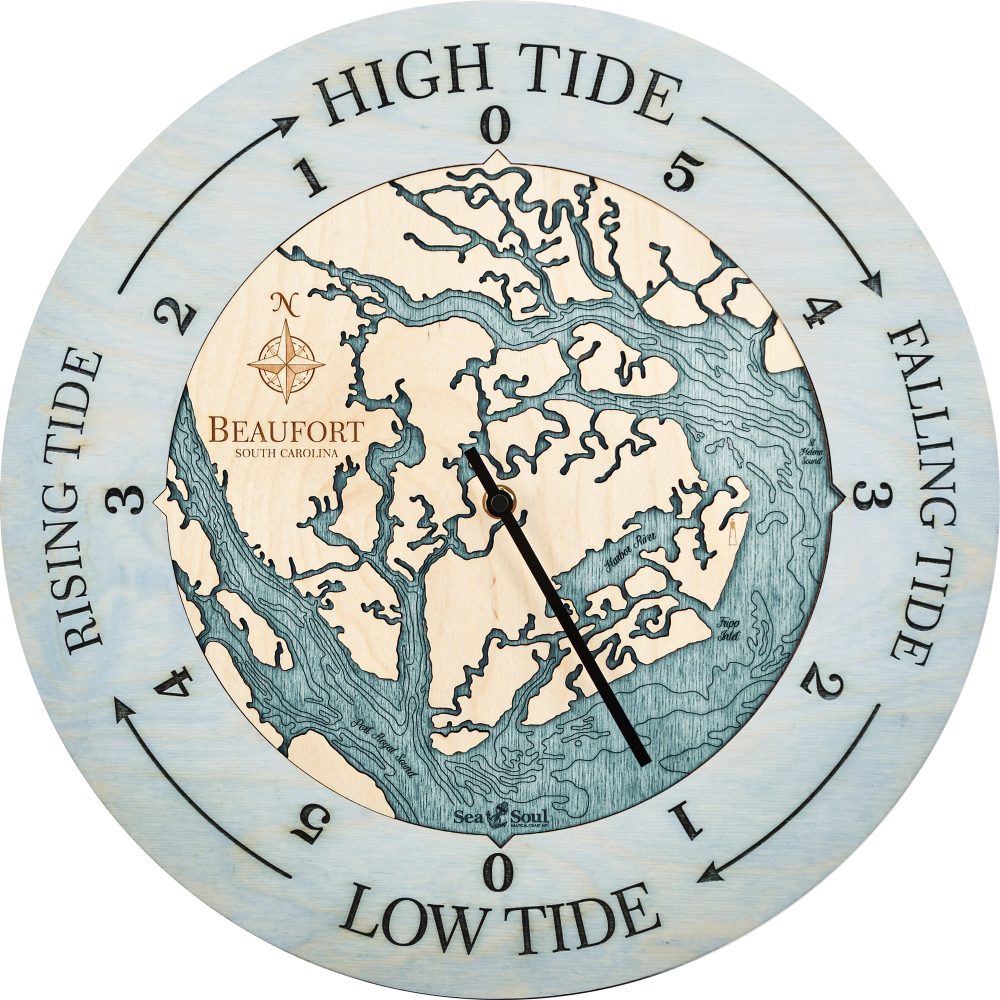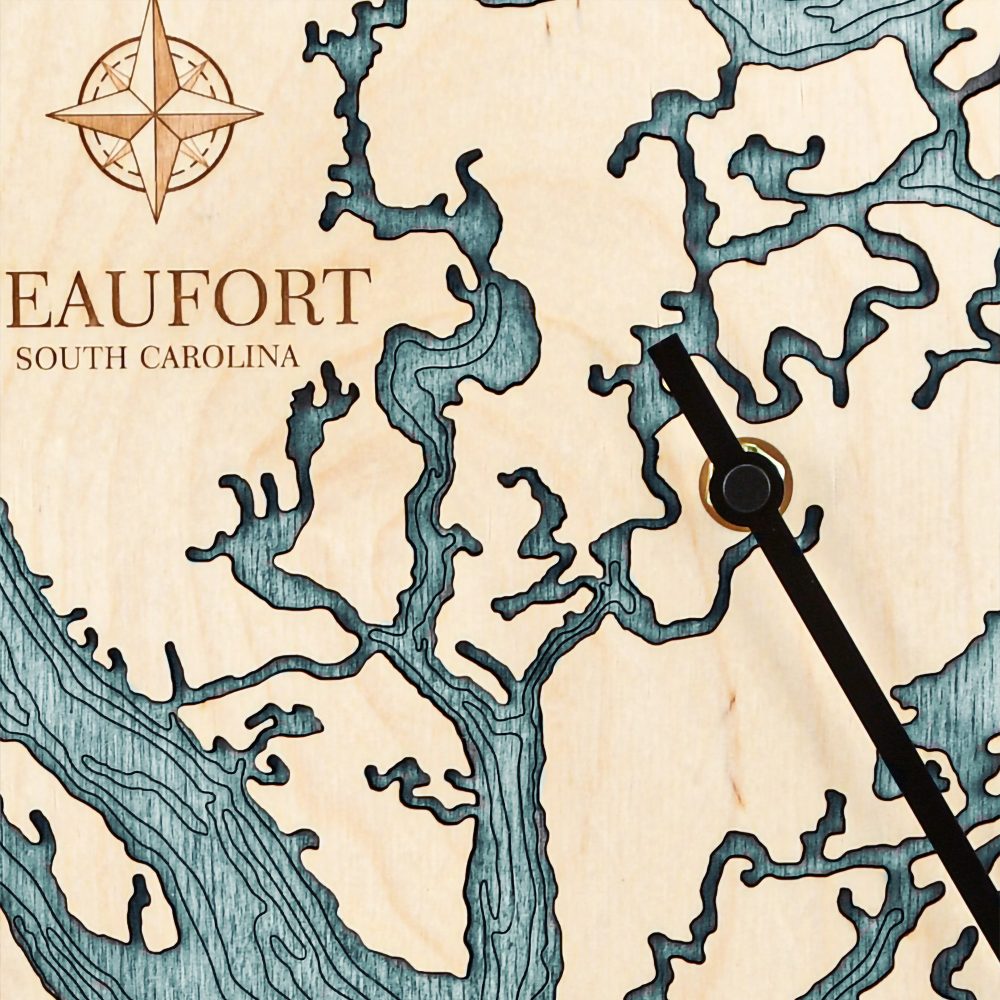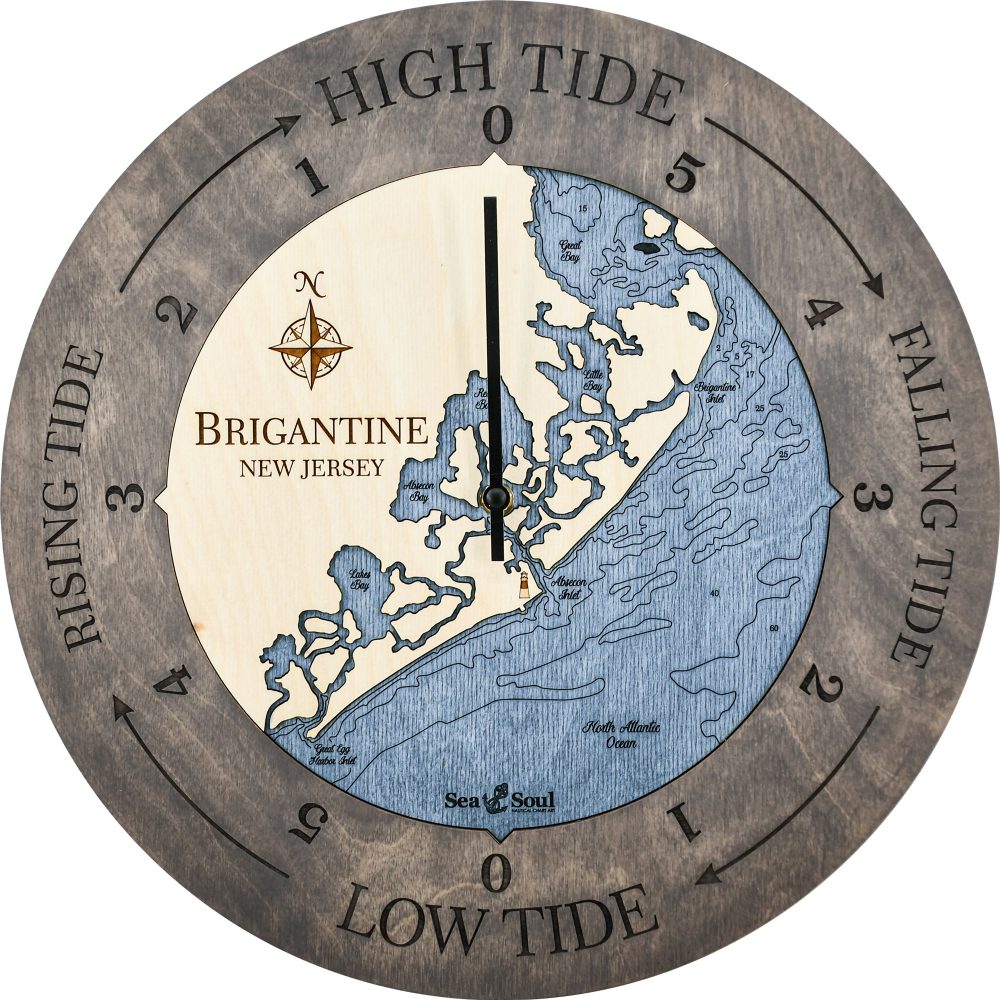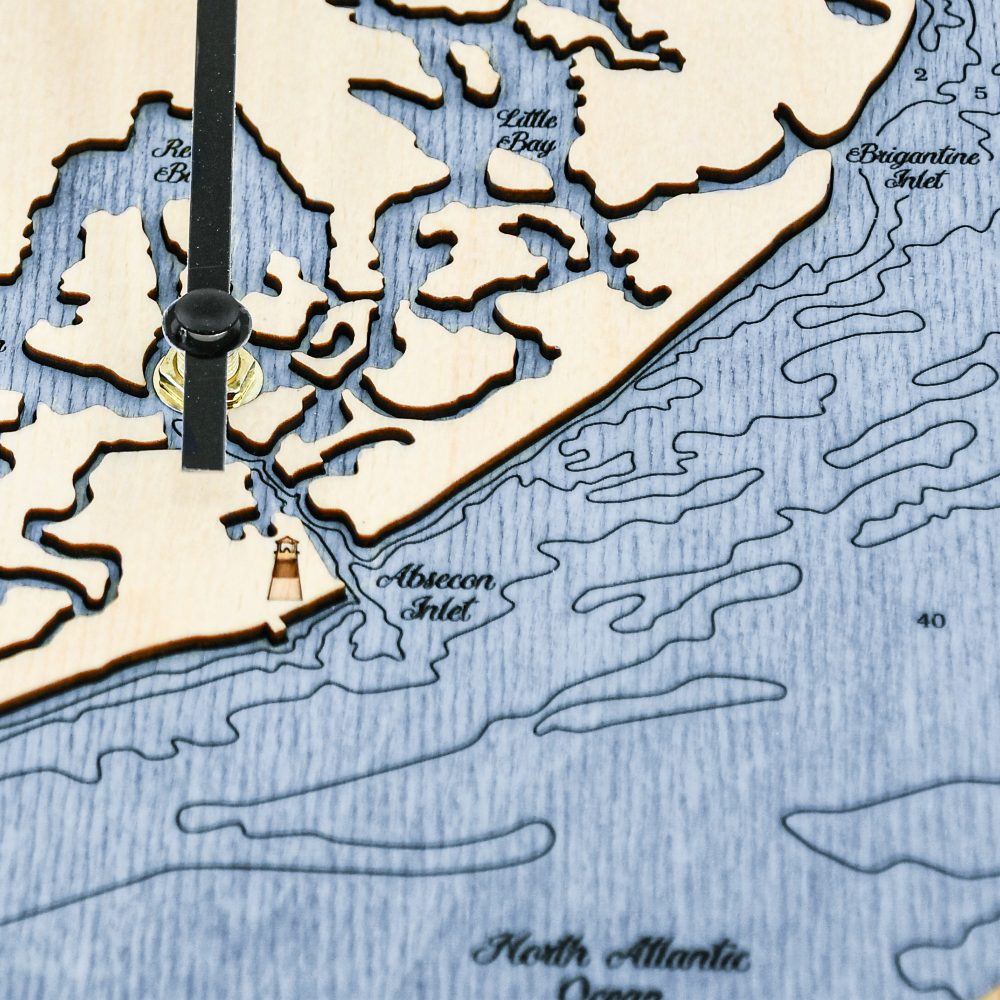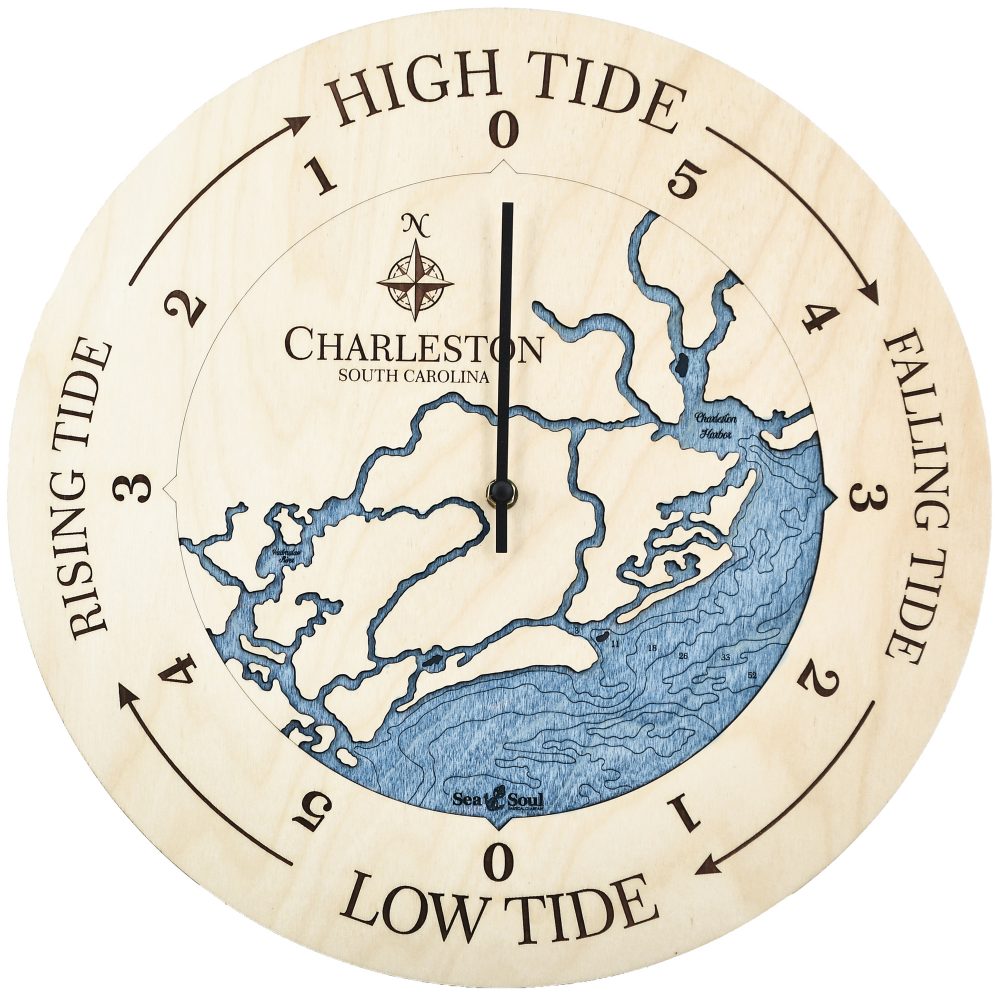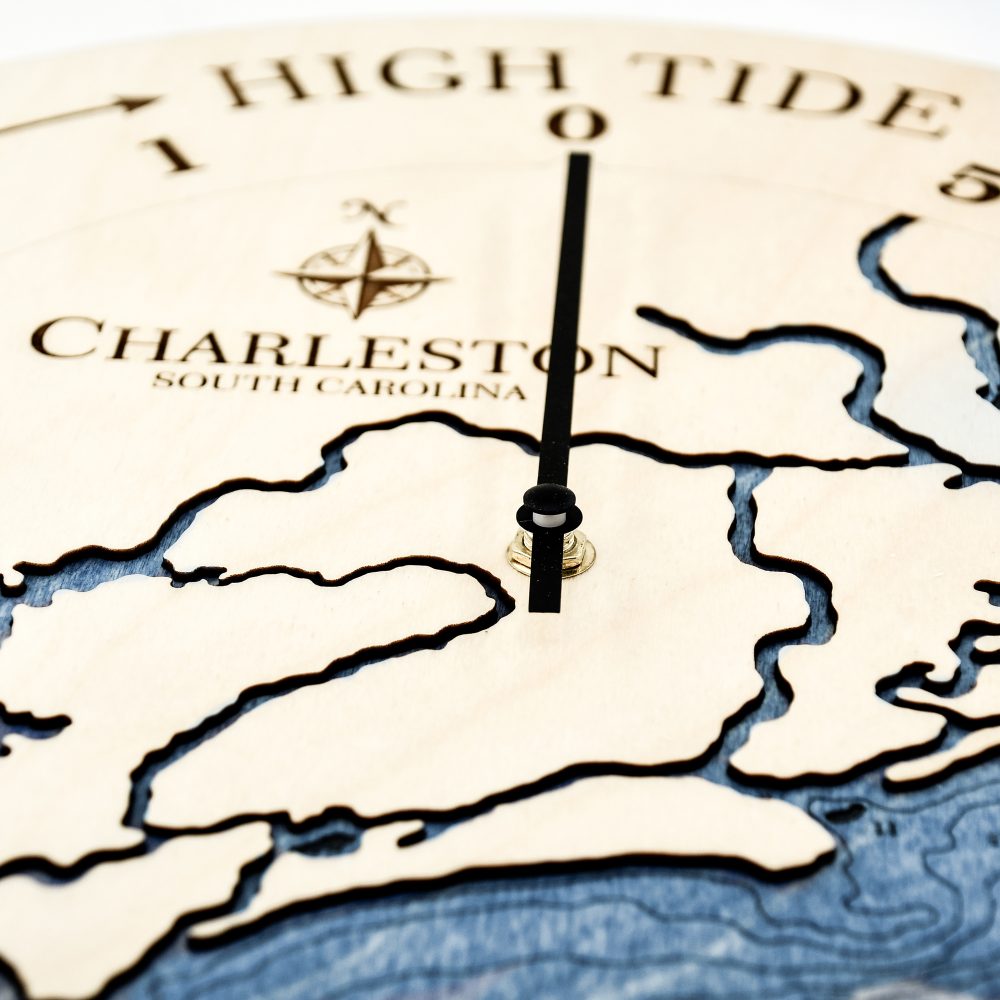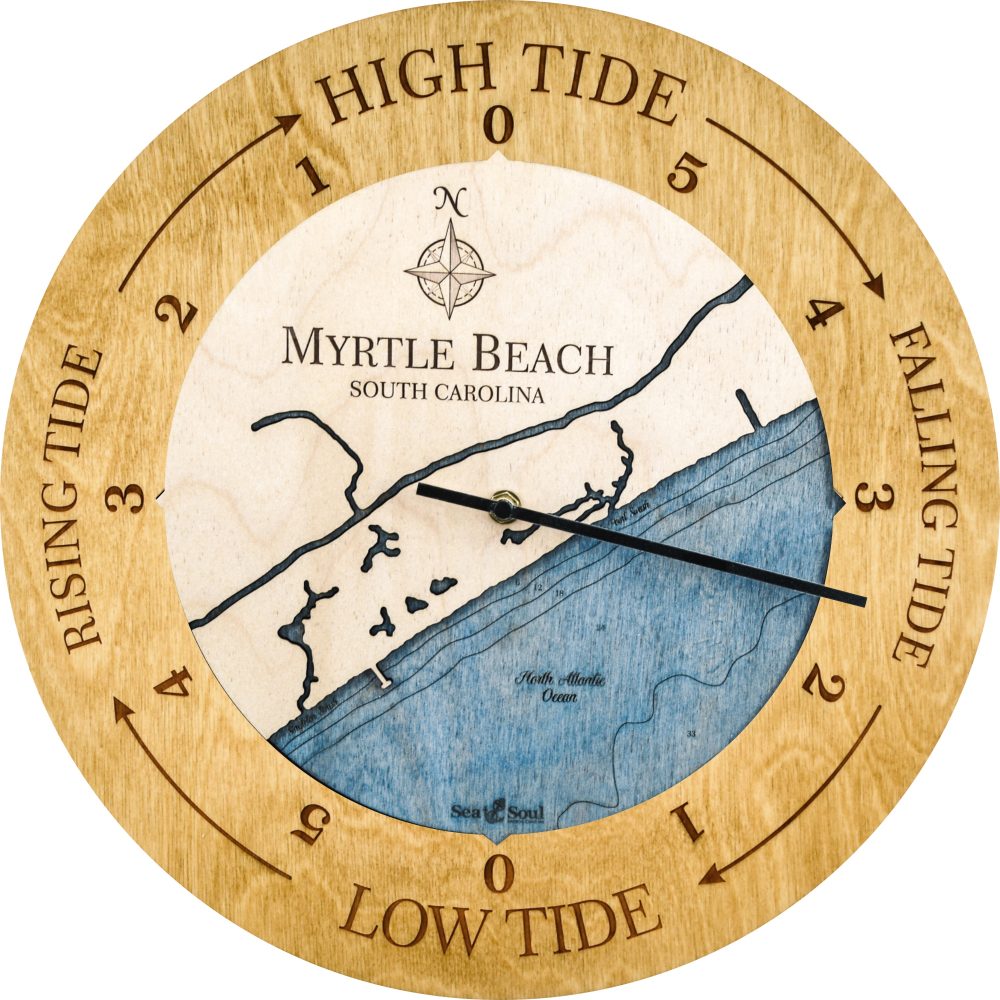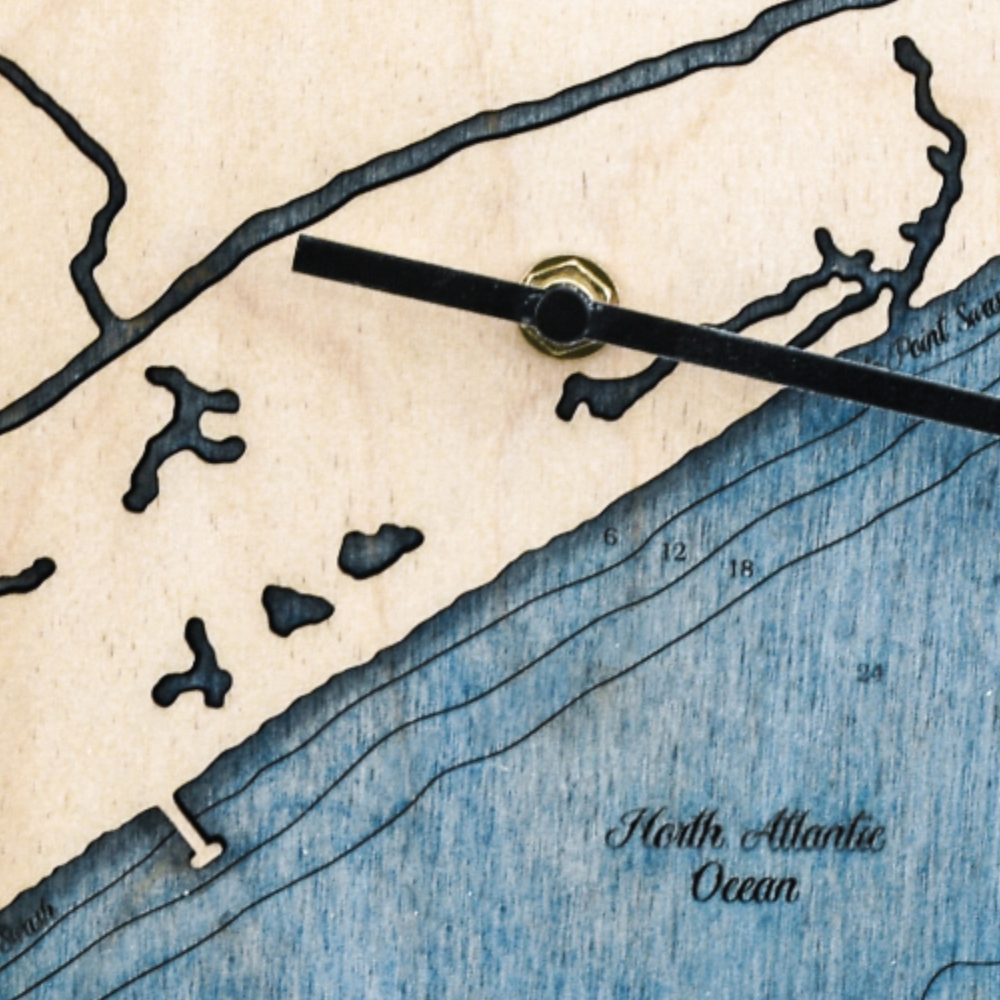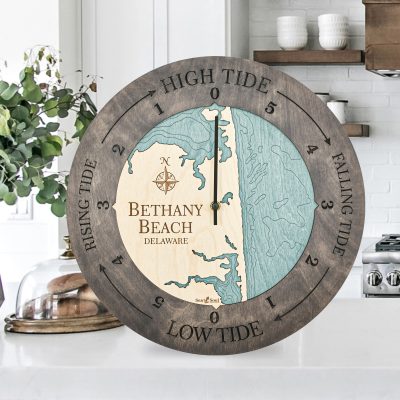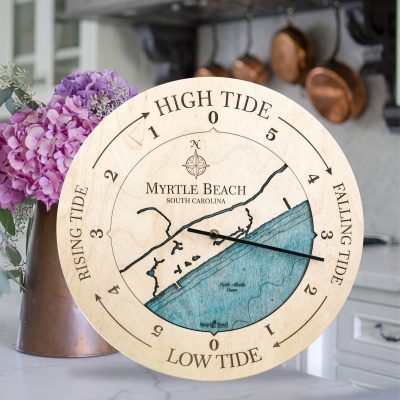Tide Clocks
TIDE CLOCKS FOR ALL YOUR FAVORITE EAST COAST LOCATIONS!
Good vibes happen on the tides! Designed by a fisherman and inventor over 50 years ago, Tide Clocks do not show the time but the tide, and more precisely the time remaining before low tide and high tide. The moon is the major cause of the tides. The lunar day, the time it takes for the moon to reappear at the same place in the sky, is 24 hours and 50-1/2 minutes. Most East Coast locations have a semidiurnal tide or two distinct high tides and two low tides each and every day. Therefore, the hand on our tide clocks rotates once every 12 hours and 25 minutes or twice each lunar day.
The signature look of Sea & Soul Nautical Chart Art is produced by combining a creative use of new technology along with time-honored techniques. Implementing innovation while respecting traditional methods, we strike a balance that ensures our products reflect both the ingenuity of the times and the timeless values of true craftsmanship. It is our intention that each of our charts becomes a family keepsake, so we create them that way – one at a time, the way it used to be. We handcraft all our products completely and proudly in the USA.
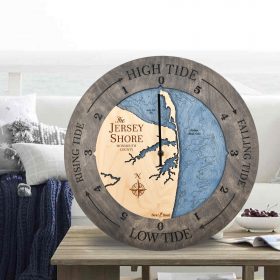
Beautiful and well made. I requested a custom click of the Eastern Shore of VA and it’s perfect! Great customer service. Thank you!

Even better in person. Looks amazing!
The Science Behind Tide Clocks
Tide clocks operate on a simple yet fascinating principle. They measure the time between high and low tides, which is influenced by the gravitational pull of the moon. Understanding the lunar cycle and the tidal patterns for your location is key to setting your tide clock accurately. Here’s how it works:
Lunar Day: The lunar day is approximately 24 hours and 50-1/2 minutes, slightly longer than a solar day. This extra time accounts for the moon’s orbit around the Earth.
Types of Tides: There are three basic types of tidal cycles that are globally distributed, Diurnal, Mixed Diurnal and Semidiurnal. Diurnal Tides have only a single high and a single low during each tidal day; successive high and low waters do not vary by a great deal. Mixed Diurnal tides are characterized by wide variation in heights of successive high and low waters, and by longer tide cycles than those of the semidiurnal cycle. Such tides occur, for example, along the U.S. Pacific coast. Semidiurnal Tides occur in most East Coast locations, meaning they have two high tides and two low tides each day. Our tide clocks are calibrated to this pattern, with the hand rotating once every 12 hours and 25 minutes and 14 seconds.
History of Tide Clocks
The history of tide clocks can be traced back to England in the 1600’s. Henry Philippes of London published a tide table for the Thames River in 1668 while Royal Astronomer John Flamsteed, also of London, is well known for his work on tide tables from 1683 to 1693. Since Flamsteed was a contemporary of Sir Isaac Newton, he also became interested in tides and determined that the tide was dependent upon the moon. Meanwhile, Thomas Thompion, a respected clockmaker in London, created the first tide clock, a longcase clock, in the mid-1670’s. Two such clocks were made and they both indicated the time of high tide at London Bridge.
The first tide-predicting machine used in the United States was designed by William Ferrel, of the U.S. Coast and Geodetic Survey in 1882. No curve was traced, but both the times and heights of the high and low waters were indicated directly by scales on the machine.
The first tide clock for consumer use in the United States was developed in 1971 and is credited to Louis Schelling and Andrew Marvel. Louis Schelling served in the United States Navy and graduated from Princeton in 1949. He joined the family industrial hardware business, became its president, then established Schelling Manufacturing Corp., where he invented the Tide Timer.
Why Choose a Tide Clock from Sea & Soul Charts?
At Sea & Soul, we take pride in our craftsmanship and attention to detail. From beloved shorelines to iconic lighthouses, each chart tells a story of maritime adventures. Embracing the uniqueness of coastal living, we strive for authenticity in every chart we create. Our products are designed to reflect the true spirit of the coast, embodying a genuine connection to each location. Each tide clock is handcrafted with care, ensuring it is not only accurate but also a beautiful addition to your home. Our tide clocks are a perfect gift for ocean lovers, boaters and fisherman alike and also a wonderful way to bring the magic of the tides into your daily life.
Explore our collection today and embrace the rhythm of the ocean with Sea & Soul Charts.
East Coast Tide Clocks - 16"
East Coast Tide Clocks - 16"
East Coast Tide Clocks - 24"
East Coast Tide Clocks - 16"
Tide Clock FAQs
HOW DO YOU SET A TIDE CLOCK?
As a general rule, it is best to set the tide hand at high tide during a full or new moon. On the date of the full moon, insert the battery precisely at high tide and adjust the wheel on the back of the mechanism to the “0” under HIGH TIDE. If set correctly, your tide clock will display minimal error throughout the month. If waiting until the next full moon is not possible, we suggest you check the reading of the tide hand during the next full or new moon. If at that time it is not indicating to high tide, again adjust the tide hand with the wheel on the back of the mechanism to the HIGH TIDE position on your clock.
CAN OUR TIDE CLOCKS MECHANISMS BE REPLACED?
Yes, with just a few easy steps our tide clock mechanisms can be replaced. Please click on the link below for detailed instructions. Order a new mechanism HERE
CAN WE MAKE TIDE CLOCKS FOR THE GULF OF MEXICO?
I wish we could offer tide clocks for the Gulf of Mexico but these tides are too irregular. Tides inside the Gulf of Mexico range from semidiurnal at Key West, Florida, to diurnal at Pensacola, Florida through Louisiana, to mixed diurnal on the West Coast of Florida and the coast of Texas. Tides in the Gulf of Mexico are more complex than open ocean stations because astronomical forcing is modified by geometrically forced nodes and antinodes.
CAN OUR TIDE CLOCKS BE PLACED OUTSIDE?
Our clocks can be placed outside under a covered area as long as it is protected from the elements. We do also want to mention, as with anything with a battery next to salt water, being placed outside will likely lessen the overall life of the lunar mechanism than if it were to be in a climate controlled environment but the mechanisms can be replaced.


